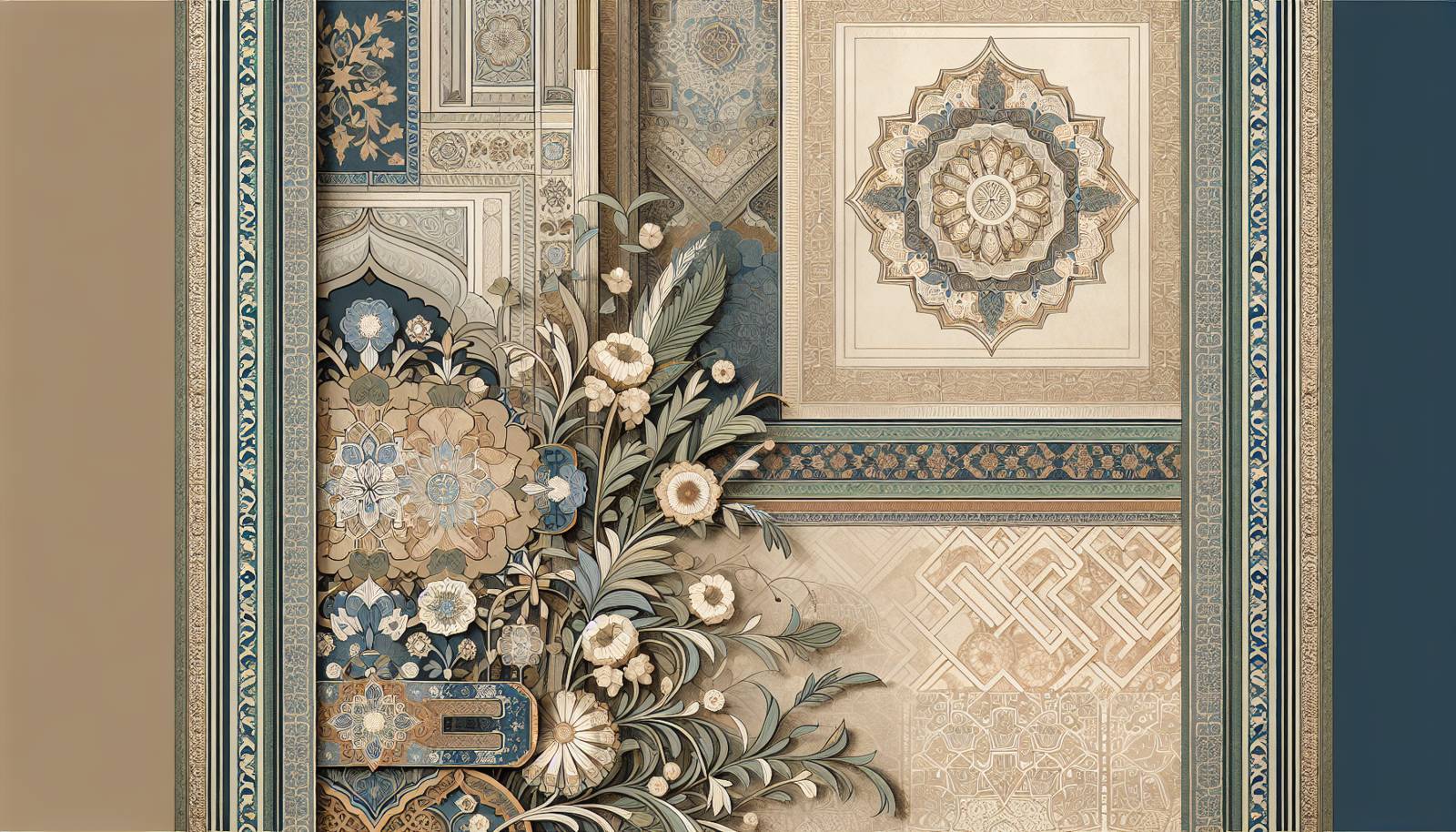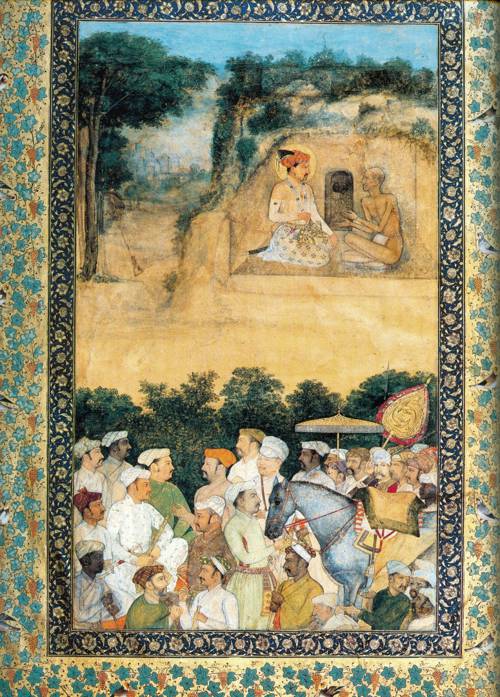
FAQ About The Influence of Mughal Art on Modern Design

What are the key characteristics of Mughal art that influence modern design?
Mughal art is renowned for its intricate details, elaborate patterns, and vibrant colors. Key characteristics include floral motifs, geometric patterns, and miniature paintings that often depict natural scenes and court life. These elements can be seen influencing modern design through bold color use and sophisticated pattern integration in textiles, architecture, and visual arts.

How has Mughal architecture influenced modern buildings?
Mughal architecture, characterized by grand domes, expansive courtyards, and ornate decorations, influences modern architecture by incorporating large-scale structures and intricate decoration. Contemporary architects often draw inspiration from the symmetry and grandeur of Mughal structures like the Taj Mahal, leading to designs that emphasize balance and decorative elegance.

In what ways has Mughal art influenced contemporary textile design?
Mughal art has greatly influenced contemporary textile design through the use of intricate floral and geometric patterns. The Mughal tradition of textile artistry involving detailed embroidery and vibrant color palettes has found its way into modern fashion and interior design, encouraging a blending of traditional motifs with modern materials and techniques.

Can you provide examples of modern visual arts influenced by Mughal art?
Modern visual arts reflect Mughal influences in paintings and illustrations that adopt the meticulous detail and complex compositions typical of Mughal miniatures. Artists often incorporate Mughal themes like opulent court scenes and naturalistic details into contemporary art pieces, creating a fusion that respects traditional aesthetics while embracing modern forms.

What are some common misconceptions about Mughal art's influence on modern design?
A common misconception is that Mughal art influence is limited to traditional Indian designs. However, its impact is global, affecting various design disciplines in different cultural contexts. Another misconception is the idea that Mughal influences are purely ornamental, overlooking their functional contributions like spatial design and architectural innovations.

How have Mughal gardens influenced contemporary landscape design?
Mughal gardens are renowned for symmetrical layouts, geometric motifs, and water features, reflecting their love for order and beauty. These principles influence contemporary landscape design by encouraging the creation of serene, balanced outdoor spaces with structured geometries and harmonious elements like fountains and reflective pools.

What role does Mughal calligraphy play in modern graphic design?
Mughal calligraphy, celebrated for its aesthetic beauty and elegance, plays a significant role in modern graphic design by inspiring fonts and typographic compositions. Designers often use calligraphic scripts derived from Mughal influences in branding and print media to invoke a sense of history and artistry.

Are there any notable modern designers known for incorporating Mughal art into their work?
Several modern designers have incorporated Mughal art into their work, including prominent fashion designers who utilize traditional motifs in contemporary garments. Architects and interior designers also often reference Mughal architectural elements in their projects, creating spaces that embody both historical richness and modern functionality.

How has technology enhanced the integration of Mughal art in modern design?
Technology has allowed for precise and accessible integration of Mughal art into modern design through digital printing, 3D modeling, and advanced embroidery techniques. These technologies enable designers to replicate Mughal patterns and motifs accurately and innovatively, leading to fresh interpretations in architecture, fashion, and graphics.

What impact has Mughal art had on modern interior design?
Mughal art impacts modern interior design through the use of opulent design elements such as lush textiles, intricate woodwork, and bold color schemes. Elements like Mughal-inspired wall art, furniture, and decorative accessories enhance spaces with a sense of luxury and cultural richness.

In what ways is Mughal influence seen in modern jewelry design?
Mughal influence in modern jewelry is visible in the use of colorful gemstones, intricate enamel work, and elaborate settings. Jewelers often draw inspiration from historical pieces, leading to designs that maintain traditional craftsmanship while appealing to contemporary aesthetics.

How do modern museums showcase Mughal art influences in contemporary works?
Modern museums showcase Mughal art influences through exhibitions that juxtapose traditional pieces with contemporary works inspired by them. This approach highlights the enduring impact of Mughal art by allowing viewers to see both the historical origins and modern adaptations side by side.

What cultural significance does Mughal art hold in modern design practices?
Mughal art holds significant cultural importance in modern design by serving as a source of inspiration that bridges cultural histories with contemporary creativity. This influences designers to incorporate traditional elements in new ways, fostering a cross-cultural dialogue that enriches global design practices.

How is Mughal art being preserved in today’s design world?
Mughal art is preserved through initiatives by cultural heritage organizations and collaborations between traditional artisans and modern designers. These efforts promote the continuation and adaptation of Mughal styles, ensuring their presence and evolution in today’s design landscape.

In which modern fashion trends can Mughal art be seen?
Mughal art influences modern fashion trends through the use of intricate embroidery, luxurious fabrics, and bold prints. Elements like paisley motifs and Mandala patterns are popular in contemporary clothing lines, reflecting the timeless appeal of Mughal design aesthetics in fashion.

How has the global perception of Mughal art changed with its integration into modern design?
The global perception of Mughal art has evolved with its integration into modern design as it is increasingly viewed as a timeless influence that transcends geographical boundaries. Its incorporation into various design fields underscores its versatility and continuing relevance in global culture.

What are the challenges in blending Mughal art with modern design?
Blending Mughal art with modern design poses challenges such as maintaining the integrity of traditional elements while innovating them for contemporary use. Designers must balance historical accuracy with creative freedom, ensuring that Mughal influences enhance rather than overshadow modern aesthetics.

Can Mughal art be integrated into sustainable design practices?
Mughal art can indeed be integrated into sustainable design practices by using eco-friendly materials and processes to replicate its intricate patterns and designs. Designers are increasingly seeking ways to honor Mughal art's legacy while promoting environmental responsibility and resourcefulness.

How can Mughal art influence digital design and media?
Mughal art influences digital design and media through aesthetically pleasing visuals and thematic elements that enrich digital platforms. Designers can incorporate Mughal motifs, color palettes, and stylistic elements into web design, video games, and virtual environments, creating engaging and culturally resonant digital experiences.

What contributions has Mughal art made to global design education?
Mughal art contributes significantly to global design education by offering rich case studies in historical design, cultural significance, and art evolution. It provides students with insights into integrating classical art elements into modern contexts, encouraging an appreciation for cultural heritage in creative processes.
